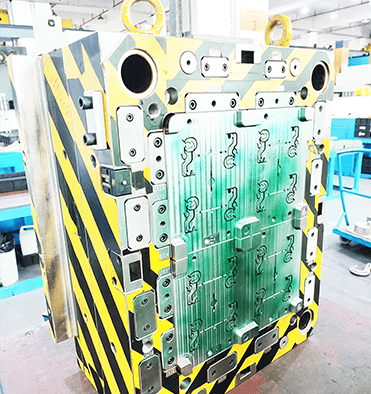Creating a Plastic Vegetable Crate Mould: Efficient and Sustainable Solution for Produce Packaging
Introduction:
In the era of increasing environmental consciousness, the need for sustainable solutions in various industries is more crucial than ever. One such industry is the produce packaging sector, which often relies on plastic containers. However, the production and disposal of traditional plastic crates contribute significantly to environmental pollution. To address this issue, the creation of a plastic vegetable crate mould offers an efficient and sustainable solution for produce packaging. This article explores the benefits and process of creating such a mould.
1. Environmental Impact of Traditional Plastic Crates:
Traditional plastic crates have several negative environmental impacts. Firstly, their production involves the extraction and refinement of fossil fuels, contributing to climate change. Secondly, these crates are often single-use and end up in landfills or oceans, taking hundreds of years to decompose. Lastly, the incineration of plastic crates releases toxic fumes and contributes to air pollution. These environmental consequences emphasize the urgency to find alternative solutions.
2. The Benefits of Plastic Vegetable Crate Moulds:
a. Reusability: A plastic vegetable crate mould enables the production of durable and reusable crates. Unlike traditional plastic crates that are primarily single-use, these moulds allow for the creation of long-lasting containers. The ability to reuse the crates reduces the demand for new production, minimizing the environmental impact.
b. Reduced Material Consumption: Plastic vegetable crate moulds optimize material consumption during the production process. By precisely shaping the mould, the amount of plastic required for each crate is minimized. This reduction in material consumption not only conserves resources but also reduces the overall cost of production.
c. Customization: The flexibility of plastic vegetable crate moulds allows for customization based on specific packaging requirements. Different sizes, shapes, and features can be easily incorporated into the design, ensuring the optimal packaging solution for various types of produce. This customization enhances efficiency during transportation and storage, reducing the risk of damage to the produce.
d. Recycling Potential: Plastic vegetable crate moulds open up possibilities for utilizing recycled plastic as a raw material. By incorporating recycled plastic into the mould, the environmental impact of production can be further minimized. This step towards a circular economy reduces the reliance on virgin plastic and promotes a sustainable approach to packaging.
3. The Process of Creating a Plastic Vegetable Crate Mould:
a. Design: The first step in creating a plastic vegetable crate mould is the design phase. Skilled designers and engineers work together to develop a comprehensive design that meets the specific requirements of the produce industry. This includes considering factors such as crate size, weight, structural integrity, and stacking capability.
b. Prototyping: After the design is finalized, a prototype of the plastic vegetable crate is created using the mould. This step allows for testing and validation of the design, ensuring that it meets the desired standards in terms of strength, durability, and functionality.

c. Production: Once the prototype is approved, the production of the plastic vegetable crate mould begins. This process involves the use of specialized machinery and high-quality materials to create the mould. Skilled technicians operate the machinery, ensuring precision and accuracy during the manufacturing process.
d. Quality Control: Before the plastic vegetable crate mould is ready for use, it undergoes rigorous quality control measures. These include testing the durability, load capacity, and overall performance of the mould. Only after meeting the quality standards, the mould is deemed suitable for mass production.
Conclusion:
The creation of a plastic vegetable crate mould offers an efficient and sustainable solution for produce packaging. By reducing environmental impacts, optimizing material consumption, allowing customization, and promoting recycling, these moulds address the concerns associated with traditional plastic crates. As the demand for sustainable packaging solutions grows, investing in the development and utilization of plastic vegetable crate moulds is a step towards a greener and more eco-friendly future in the produce packaging industry.
Előző:Crafting the Perfect Crate Mould: Unlocking Efficiency and Precision
Következő: Achieving Precision and Performance: Aerospace Molding Parts
-
Injection mold making: Precision processes shaping the future of industry
2024-12-31
In modern manufacturing industry, injection mold manufacturing occupies a pivotal position. From plastic products in dai...
Részletek megtekintése -
Designing a High-Quality Plastic Injection Chair Mould for Ultimate Comfort
2023-7-8
Introduction: Chairs are an essential piece of furniture found in homes, offices, and various public spaces. The design ...
Részletek megtekintése -
Injection molding gate: silent art, perfection in detail
2024-2-28
In the injection molding process, the gate is the main channel through which molten plastic enters the mold, and its imp...
Részletek megtekintése -
Creating a Plastic Garbage Bin Mold: A Comprehensive Guide
2023-6-10
Plastic garbage bins play an important role in waste management. They are essential in keeping our homes and public area...
Részletek megtekintése -
Mold Design facture: Creating Perfect Molds for Your Manufacturing Needs
2023-6-2
Mold design is a crucial part of manufacturing. Creating a perfect mold requires a deep understanding of the manufacturi...
Részletek megtekintése -
Precision Engineering and Innovation: The Art of Creating Automotive Molds
2023-6-6
The automotive industry is continuously evolving, and with it, the demand for precision engineering and innovation in th...
Részletek megtekintése







